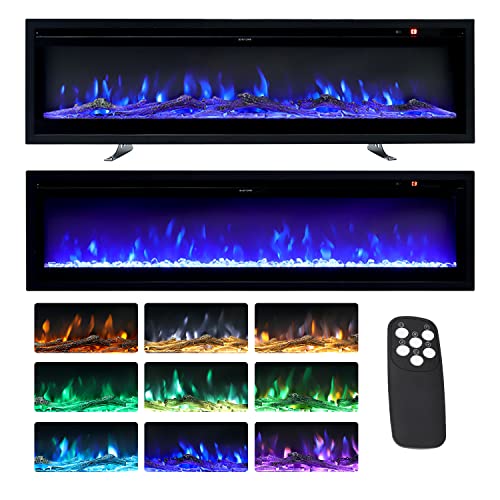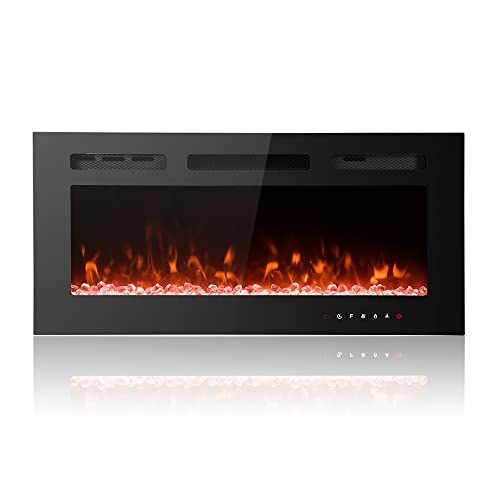5 Killer Quora Answers On Wood Burning Fires
페이지 정보

본문
 Wood Burning Fires Need to Be Hot and Clean
Wood Burning Fires Need to Be Hot and CleanWood burning fires are not only comforting and mesmerising They're also an essential aspect of our wellbeing and health. They need to be warm and clean in order to work.
 Green wood, or unseasoned wood, has a high moisture content, making it difficult to ignite and burn effectively. The seasoned, or kiln dried wood has low moisture content and is more easy to ignite and burn for longer.
Green wood, or unseasoned wood, has a high moisture content, making it difficult to ignite and burn effectively. The seasoned, or kiln dried wood has low moisture content and is more easy to ignite and burn for longer.Efficient Combustion
A wood fire has to be hot enough to push out water and reach temperatures that are above 540 degrees F ( The process of producing heat in secondary combustion starts at 900 degrees F (in ideal conditions). This is the key step in efficiently burning fuel while reducing pollution and smoke that enters the flue.
It is important to note that the temperature required for secondary combustion varies with the type of fuel and the environmental conditions. The best method to reduce the variations is to use dry firewood that is seasoned and has an average moisture content of less than 20 percent.
In addition, the quantity of air that is pumped into the fire can have a significant impact on its heat output and time to burn. The greater the oxygen supply, the more hot a fire will burn and the shorter its burn duration. A wood fire produces less energy and burn slower when the air supply is limited.
To increase the time of burning and efficiency To maximize the efficiency and time of burn, a wood stove or fireplace insert should be equipped with an adjustable air damper. Wide open settings allow the fire to use up all oxygen available and quickly exhaust the supply of usable fuel. A fire that is contained within an area of limited size is less likely to spread.
A firewood pile that is well-dried is also vital for efficient wood heater stove burning. Freshly cut wood that hasn't been dried will contain a lot of water, making it difficult to burn. It is recommended to only use wood that is seasoned and has been stored outdoors for between six and nine months to ensure optimal performance.
The BTU content of wood is another aspect to take into consideration. White pine and spruce may be more affordable than eastern hardwoods such as shagbark and hickory as well as black locust, however their BTU values are greater. This means that they'll produce more heat from the same amount of wood. This is why it's crucial to take into consideration your heating requirements and the fuel costs when selecting your firewood.
Clean Burning
Wood smoke is a source of indoor air pollutants that irritate the lungs and cause respiratory distress, especially for older adults and children. These pollutants include volatile aromatic hydrocarbons (PAHs) like benzo-a pyrene and formaldehyde and volatile organic compounds, such as benzene. Volatile tars (such as creosote) are also released when firewood is burnt.
Smoke from old, poorly designed wood stoves and fireplaces can contribute to poor outdoor air quality by decreasing visibility and causing photochemical pollution. However, modern clean burning fireplaces and wood stoves equipped with modern technology for combustion, when used properly can significantly reduce the emissions.
Stage 1 - The vaporization of moisture: As the log warms it releases water vapour which escapes through the chimney flue. This consumes more energy than it would have if the log was seasoned to dry before burning. It also consumes energy that could be used for to heat your home.
These vapors mix in the flue with carbon particles to produce smoke. Smoke is one of the major contributors to particulate matter in the air and is one of the main sources of smog that we experience on clear days.
Fireplaces and wood stoves equipped with clean burn technology, if properly used, can greatly reduce the risk of this by converting the logs into the state of charcoal which releases much less volatile gases, as well as producing the majority of the energy contained in the log from usable heat.
Avoid using damp or sour wood to fuel your fire as it is more difficult to burn and generates lots of creosote compared to well-seasoned wood. Don't over-load your stove with thin and soft wood like pine or fir as it requires more energy to burn them and they also produce more smoke which can cause chimney fires.
Use a bucket made of steel to scoop up ashes from the stove, Wood Burning Fires and always wait for them to cool before handling them. Dispose of or store ashes correctly. They are able to ignite again when exposed to water and are dangerous in landfills. Use them in your garden or at your home.
Storing, seasoning and properly burning your wood can help you save money and keep your stove running efficiently. It is also important to clean your chimney regularly to remove deposited creosote and other particles as well as to avoid chimney fires and maintain safe operation.
Safety
It's difficult to beat a warm fireplace in the winter cold However, security precautions must be taken. When fires are built incorrectly or left unattended, or if they are burned, dangerous fumes can enter the home. Creosote also builds up in the chimney. These deposits could block the flue, inhibit the flow of air and cause your furnace or wood stove to run less efficiently.
Never burn painted or treated wood, household garbage paper, rags, or other combustible substances in your wood-burning fireplace or stove. They produce noxious gases and can release toxic fumes such as carbon monoxide. Do not use flammable liquids as a fire starter. Gasoline, kerosene and lighter fluids can increase emissions, create toxic creosote and possibly cause chimney fires.
Keep flammable materials like furniture, curtains, and even toys, at a safe distance from your fireplace or stove. Never hang clothing on or near your fireplace that is wood burning. Make sure your children know that the fireplace is extremely hot and should not be touched.
Use only seasoned wood for your fireplace or stove. The wood that is seasoned has been dried through the summer to reduce the moisture content. Woods that are damp emit more smoke and creosote whereas the wood that has been seasoned is more efficient and clear. Seasoned wood is darker and cracks appear along the ends of the grain, and sounds hollow when you tap it. Store your logs outside, neatly stacked with the top covered but allowing air circulation to them.
Be aware not to over-load your stove or fireplace because overloaded appliances produce more smoke and less heat. Fires that are overloaded can also create dangerous levels of carbon monoxide. If you have an older appliance that has an aluminum liner, be sure to check it regularly for signs of wear. This could lead to an explosion in the chimney.
The EPA suggests reducing the amount of smoke in your home by using dry, well-seasoned, split and dry wood, and then constructing a warm fire with small wood burner pieces. Avoid using soft woods such as pine, which can be a good starter material to get your fire up and running but shouldn't be used for anything other than. These softer woods have resin and Wood burning fires sap that, when burnt, deposits excessive creosote inside the chimney.
Maintenance
A warm fire in a wood-burning fireplace is an ideal method to relax during the cold nights of winter. But, it is essential to maintain your fireplace to ensure that you receive the maximum enjoyment from your fireplace. Regularly cleaning and inspecting your fireplace is the best method to avoid problems that may arise. This prevents the build-up of creosote and keeps the chimney clear for maximum efficiency.
If wood heater stove doesn't completely burn it forms creosote in the chimney. If a significant amount of creosote builds up it can cause chimney fires which are the second leading cause of house fires in the United States. The failure of a fireplace to fully burn is caused by a variety of reasons including dampers that aren't properly closed and cracks in the chimney's liner as well as a lack of regular cleaning and removal of ash.
Incorrectly seasoned wood causes the accumulation of creosote to an excessive degree. This is because up to half the weight of a piece of wood is water. When the fire is burning it boils and releases heat, but it also consumes energy during the process. The water vapor that is produced then condenses into creosote and is released into the air as a part of smoke.
Another harmful side effect of burning contemporary wood burning stoves is soot. Soot, although less dense than creosote, can impede airflow and stick to the walls. It is also an hazard to fire because it is a natural igniter when exposed to gases that are combustible.
Take the ashes out of your fireplace and put them in an ash container made of metal. Keep it outside on an unflammable surface. Don't forget that ashes are a great source of nutrients for your plants. Spread them out in your yard!
Regularly make sure that your chimney and fireplace are inspected by a Regency Dealer certified. The technician can check for cracks, creosote and soot levels, a properly shut damper and the condition of the catalyst. If you have a double-stage fireplace that has an air tube, you must remove the catalyst and visually inspected for any blockages. Consult your user manual to learn how to do it for your unit.
- 이전글You'll Never Guess This Doors Windows Near Me's Tricks 25.02.02
- 다음글How Double Glazed Door Repairs Near Me Became The Top Trend On Social Media 25.02.02
댓글목록
등록된 댓글이 없습니다.
